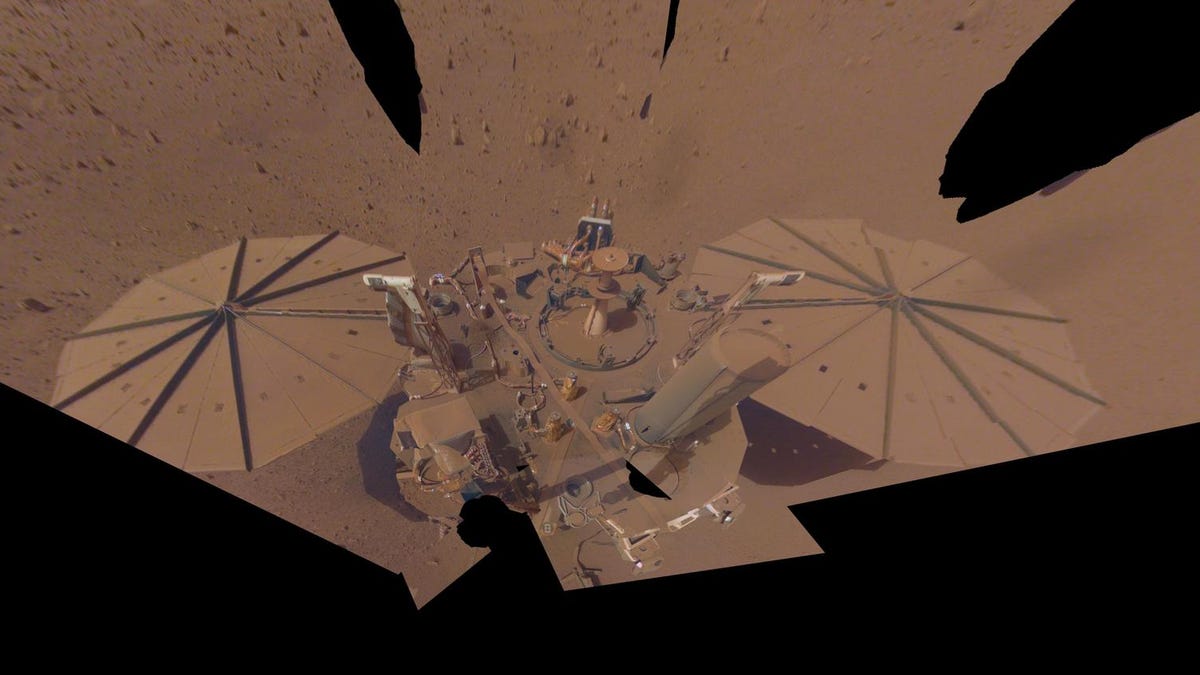Massive Dust Storm on Mars Threatens NASA's Mars InSight Lander
InSight just can't catch a break as it tries to finish out its Mars mission in style.

NASA expects this InSight selfie from April 24, 2022, will be the lander's last.
Things are just getting tougher on Mars for NASA's InSight lander. A continent-size Martian dust storm that kicked up in late September is putting additional pressure on the lander's power supply.
In early October, NASA noted a big drop in energy available to the solar-powered lander. "By Monday, Oct. 3, the storm had grown large enough and was lofting so much dust that the thickness of the dusty haze in the Martian atmosphere had increased by nearly 40% around InSight," the agency said in a statement Friday. With the storm brewing, the lander was no longer able to fully charge its batteries.
A global map of Mars from late September 2022 shows the locations of InSight, Curiosity and Perseverance. The beige clouds indicate a regional dust storm.
The lander's solar arrays were already caked in dust, a condition that has left it short on power as it nears its mission end. The InSight team had powered down most of the lander's instruments, leaving just the seismometer running to try to detect as many marsquakes as possible for as long as possible.
NASA had been eyeing late 2022 or early 2023 for bidding farewell to InSight, but that timeline is up in the air. "At the current rate of discharge, the lander would be able to operate only for several weeks," said NASA. "So to conserve energy, the mission will turn off InSight's seismometer for the next two weeks."
There's a small bit of good news in that the regional storm may have reached its peak and will soon diminish. NASA's Mars Reconnaissance Orbiter is monitoring the storm from above and has seen signs of the storm's growth slowing down.
InSight has had both triumphs and challenges since landing on Mars in 2018. It has revealed new information about the red planet's interior and recorded quake activity, including a monster of a marsquake earlier this year.
InSight's predicament will inevitably call up memories of NASA's dearly departed Opportunity rover, which fell victim to a massive global dust storm. Opportunity's mission was finally declared over in 2019. NASA's more recent rovers, Curiosity and Perseverance, are nuclear-powered and not subject to the whims of Martian dust.
InSight's final days will remain uncertain for now. Said InSight project manager Chuck Scott, "If we can ride this out, we can keep operating into winter — but I'd worry about the next storm that comes along."

